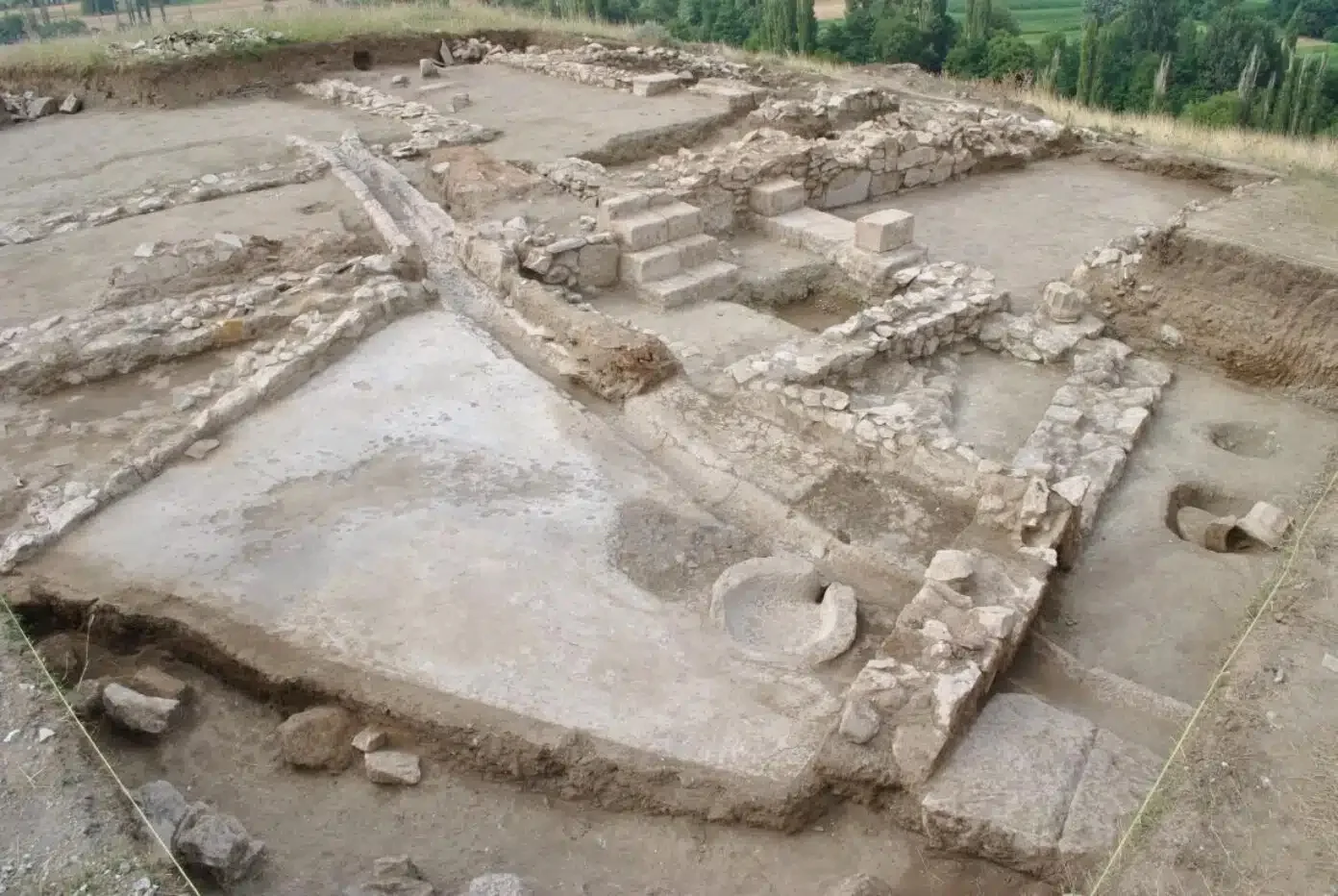Excavations by the Museum of Kumanovo near the village of Mlado Nagoričane in the municipality of Staro Nagoričane have uncovered a Hellenistic-era residence dating to the 4th century BC.
The discovery was made at the Gradishte archaeological site during a study of a hill believed to be the settlement’s acropolis.
According to experts, the residence was likely the home of a local nobleman during the late 4th century BC and features a central courtyard surrounded by a portico, and its interior walls were once adorned with painted plaster in a masonry-style technique.
Among the most striking architectural elements are fully preserved Ionic column capitals and bases, coated in plaster — the northernmost examples of their kind yet discovered in the Hellenistic world.
One of the rooms within the structure functioned as a bath, complete with a plastered floor and an integrated water supply system, indicating an advanced level of infrastructure.
Additionally, archaeologists uncovered elaborately decorated doorway fragments with bronze bosses, closely resembling features seen on tomb doors from the Macedonian sites of Agia Paraskevi and Langaza.
Numerous imported artefacts were found on site, including fragments of West Slope pottery, Thasian amphorae, and perfume vessels (unguentaria), all dating to the 4th–3rd century BCE. A standout discovery was a locally made pottery shard bearing a vulgar Greek graffito (Ψωλή κύ…), representing the northernmost example of the aporetic inscriptions known in the ancient Greek world.
Beneath the residence, the team identified massive stone walls possibly representing an earlier phase of elite habitation, although their exact dating remains uncertain due to the lack of clear stratigraphic context.
Previous excavation seasons at Gradishte have revealed additional features, including an internal fortification wall with a stylobate-like platform and a rock-cut sanctuary comparable to the one at Rachi near Corinth.
The 2025 campaign was led by project director Dejan Gjorgjievski of the Museum of Kumanovo, whose ongoing work continues to shed light on the cultural and architectural complexity of Hellenistic influence in the northern Balkans.
Header Image Credit : NI Museum of Kumanovo
Sources : NI Museum of Kumanovo





